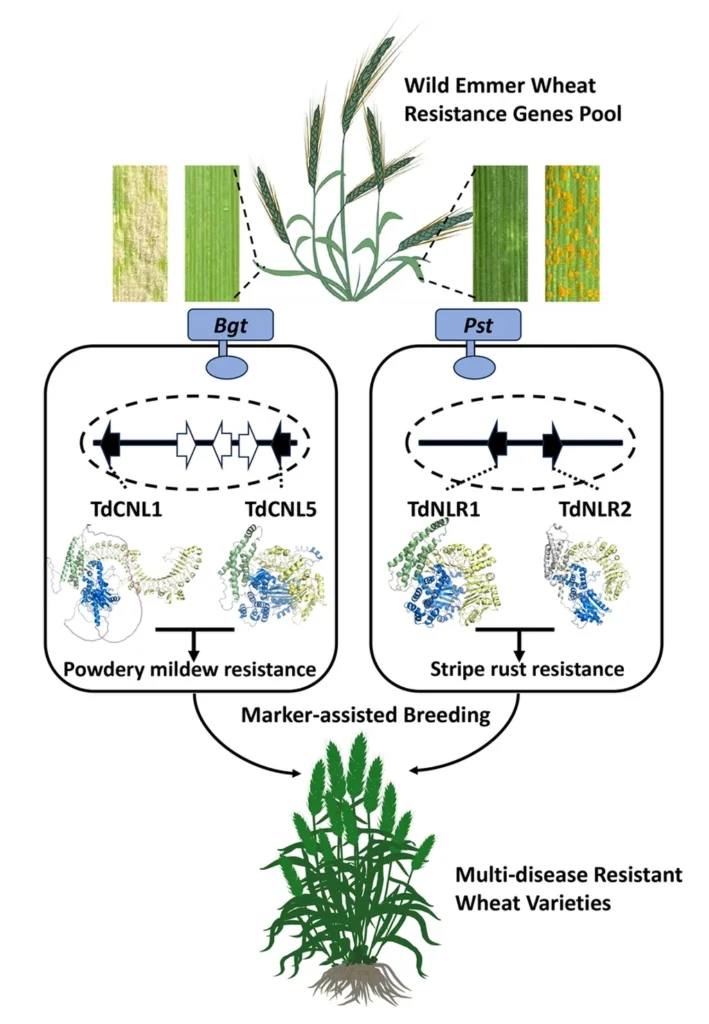In a groundbreaking discovery that could reshape wheat breeding and bolster global food security, researchers have identified a unique pair of genes that work together to confer robust resistance against powdery mildew, a devastating fungal disease. The study, led by Huaizhi Zhang from the State Key Laboratory of Seed Innovation at the Institute of Genetics and Developmental Biology, Chinese Academy of Science, was recently published in *Nature Communications* (translated to English as “Nature Communications”).
Powdery mildew is a significant threat to wheat crops worldwide, causing substantial yield losses and economic damage. Traditional breeding efforts have primarily focused on single-gene resistance, but these solutions are often short-lived as the pathogen evolves to overcome them. The new research, however, unveils a novel strategy: a pair of adjacent NLR (nucleotide-binding leucine-rich repeat) proteins, named PmWR183-NLR1 and PmWR183-NLR2, which function cooperatively to provide effective resistance.
“Neither gene alone confers resistance, but their co-expression restores immunity,” explained Zhang. This cooperative action was demonstrated through stable transformation and CRISPR/Cas9 knockout experiments, which showed that disrupting either gene abolishes resistance. The findings highlight the potential of paired NLRs as a durable solution for disease resistance in wheat.
One of the most intriguing aspects of this discovery is the developmental stage-dependent response mediated by PmWR183. While seedlings remain susceptible, adult plants exhibit strong resistance, suggesting a complex regulatory mechanism that could be harnessed for targeted breeding strategies.
Protein interaction assays revealed that PmWR183-NLR1 and PmWR183-NLR2 are constitutively associated, further supporting their cooperative role. This constitutive association is a rare phenomenon and opens new avenues for understanding the molecular basis of disease resistance in plants.
Geographical and haplotype analyses traced the origin of the PmWR183 locus to wild emmer wheat (Triticum dicoccoides), which is rare in cultivated wheat. The researchers identified at least nine haplotypes, indicating a diverse genetic pool that could be exploited for breeding programs.
The implications of this research are profound for the agricultural sector. By incorporating these paired NLR genes into commercial wheat varieties, breeders could develop crops with enhanced resistance to powdery mildew, reducing the need for chemical fungicides and improving sustainability. “This discovery provides valuable resources for wheat breeding and could significantly impact global food security,” Zhang noted.
As the world grapples with the challenges of climate change and a growing population, innovative solutions like this are crucial. The identification of PmWR183 offers a promising path forward, demonstrating the power of genetic diversity in wild relatives to address pressing agricultural issues.
This research not only advances our understanding of plant immunity but also paves the way for more resilient and productive wheat varieties. As the scientific community continues to explore the potential of paired NLRs, the future of wheat breeding looks brighter and more secure.

